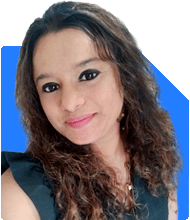Ramalingam Kalirajan |10870 Answers |Ask -Follow
Mutual Funds, Financial Planning Expert - Answered on Jul 10, 2024
He has an MBA in finance from the University of Madras and is a certified financial planner.
He is the director and chief financial planner at Holistic Investment, a Chennai-based firm that offers financial planning and wealth management advice.... more

Hello expert, I hope this message finds you well. My name is Hemanth, and I have recently completed my BTech. I am about to start my career in an IT company with a monthly salary of ?60,000. I am keen on planning my investments wisely and would like to seek your expertise on the matter. Specifically, I am interested in understanding how I can allocate my funds across different sectors to ensure a balanced and growth-oriented portfolio.
Understanding Your Financial Goals
Before we jump into investment options, it’s important to understand your financial goals. Since you're just starting your career, you may have short-term goals like buying gadgets or a bike, and long-term goals like buying a house or retirement. Having clear goals will help you plan your investments better.
Building an Emergency Fund
The first step in financial planning is building an emergency fund. Aim to save 3-6 months' worth of expenses. This fund should be easily accessible, so consider keeping it in a savings account or a liquid mutual fund. An emergency fund provides financial security during unforeseen circumstances.
Allocating Funds for Investments
After setting aside your emergency fund, let’s allocate your Rs. 60,000 monthly salary. A good starting point is to follow the 50-30-20 rule:
50% for essential expenses (rent, groceries, utilities)
30% for discretionary spending (entertainment, dining out)
20% for savings and investments
Mutual Funds: A Core Investment Option
Mutual funds are a great way to start investing. They offer diversification and professional management, which are essential for beginners. Let’s break down the different types of mutual funds:
Equity Mutual Funds
Large-Cap Funds: These invest in large, well-established companies. They offer stability and moderate returns. Ideal for long-term goals.
Mid-Cap and Small-Cap Funds: These invest in mid-sized and smaller companies. They have higher growth potential but also higher risk. Suitable for long-term investment if you have a higher risk tolerance.
Sectoral/Thematic Funds: These invest in specific sectors like technology, healthcare, etc. They can offer high returns but come with higher risk. Good for investors with a good understanding of market trends.
Debt Mutual Funds
Short-Term Debt Funds: These invest in short-term fixed-income securities. They are less risky than equity funds and are good for short-term goals.
Long-Term Debt Funds: These invest in long-term fixed-income securities. They offer stable returns with moderate risk.
Liquid Funds: Ideal for parking surplus funds for short periods. They offer better returns than savings accounts with high liquidity.
Hybrid Mutual Funds
Balanced Funds: These invest in a mix of equity and debt. They offer a balance of risk and return. Good for investors looking for moderate growth with lower risk.
Monthly Income Plans (MIPs): These primarily invest in debt with a small portion in equity. They offer regular income with lower risk.
Benefits of Mutual Funds
Diversification: Spreads your investment across various assets, reducing risk.
Professional Management: Managed by experienced fund managers who make investment decisions.
Liquidity: You can easily buy and sell mutual fund units.
Power of Compounding: Reinvesting returns can significantly grow your investment over time.
Systematic Investment Plan (SIP)
A SIP is a great way to invest in mutual funds. It allows you to invest a fixed amount regularly, say monthly. Benefits of SIP:
Rupee Cost Averaging: You buy more units when prices are low and fewer when prices are high, averaging out the cost.
Discipline: Encourages regular saving and investment.
Flexibility: You can start with a small amount and gradually increase it.
Avoiding Index Funds
Index funds are passively managed and track a market index. While they have low fees, they lack the potential for higher returns that actively managed funds offer. Actively managed funds are overseen by fund managers who can adjust the portfolio based on market conditions, potentially leading to better returns.
Direct Funds vs. Regular Funds
Direct funds may seem attractive due to lower fees, but they require you to manage your investments actively. Regular funds, managed through a Mutual Fund Distributor (MFD) with Certified Financial Planner (CFP) credentials, offer professional advice and guidance. This can be invaluable, especially for new investors.
Investing in Public Provident Fund (PPF)
PPF is a long-term savings scheme backed by the government. It offers tax benefits and attractive interest rates. It’s a safe option for building a retirement corpus.
National Pension System (NPS)
NPS is a retirement-focused investment option. It offers tax benefits and a mix of equity and debt investments. It’s a good option for long-term retirement planning.
Equity-Linked Savings Scheme (ELSS)
ELSS is a type of mutual fund that offers tax benefits under Section 80C. It has a lock-in period of three years and invests predominantly in equities. It’s a good option for tax-saving and wealth creation.
Health Insurance
Ensure you have adequate health insurance. Medical emergencies can be financially draining. A good health insurance policy protects you and your family from unexpected medical expenses.
Term Insurance
Consider taking a term insurance policy. It offers a high sum assured at a low premium. It ensures financial security for your family in case of an unfortunate event.
Gold Investment
Investing in gold can be a good way to diversify your portfolio. However, instead of buying physical gold, consider paperless gold options like Gold ETFs or Sovereign Gold Bonds. They offer better returns and are hassle-free.
Monitoring and Reviewing Your Portfolio
Regularly monitor and review your investment portfolio. Market conditions and your financial goals can change over time. Adjust your investments accordingly to stay on track.
Seeking Professional Advice
While it's great to have a basic understanding of investments, seeking advice from a Certified Financial Planner can be beneficial. They can help you tailor your investment strategy to your specific needs and goals.
Final Insights
Hemanth, starting your investment journey early gives you a significant advantage. By diversifying your investments and focusing on long-term goals, you can build a robust financial portfolio. Remember to regularly review your investments and adjust them as needed. With careful planning and discipline, you can achieve financial security and growth.
Best Regards,
K. Ramalingam, MBA, CFP
Chief Financial Planner
www.holisticinvestment.in
You may like to see similar questions and answers below
Jinal Mehta | Answer |Ask -Follow
Financial Planner - Answered on Feb 25, 2024
Ramalingam Kalirajan |10870 Answers |Ask -Follow
Mutual Funds, Financial Planning Expert - Answered on May 26, 2024
Ramalingam Kalirajan |10870 Answers |Ask -Follow
Mutual Funds, Financial Planning Expert - Answered on Apr 30, 2024
Ramalingam Kalirajan |10870 Answers |Ask -Follow
Mutual Funds, Financial Planning Expert - Answered on Jun 24, 2024
Ramalingam Kalirajan |10870 Answers |Ask -Follow
Mutual Funds, Financial Planning Expert - Answered on Dec 27, 2024
Dr Dipankar Dutta |1836 Answers |Ask -Follow
Tech Careers and Skill Development Expert - Answered on Dec 05, 2025
Ulhas Joshi |280 Answers |Ask -Follow
Mutual Fund Expert - Answered on Dec 05, 2025
Dr Dipankar Dutta |1836 Answers |Ask -Follow
Tech Careers and Skill Development Expert - Answered on Dec 04, 2025
Ravi Mittal |676 Answers |Ask -Follow
Dating, Relationships Expert - Answered on Dec 04, 2025
Anu Krishna |1745 Answers |Ask -Follow
Relationships Expert, Mind Coach - Answered on Dec 04, 2025
Anu Krishna |1745 Answers |Ask -Follow
Relationships Expert, Mind Coach - Answered on Dec 04, 2025
Mayank Chandel |2562 Answers |Ask -Follow
IIT-JEE, NEET-UG, SAT, CLAT, CA, CS Exam Expert - Answered on Dec 04, 2025
Mayank Chandel |2562 Answers |Ask -Follow
IIT-JEE, NEET-UG, SAT, CLAT, CA, CS Exam Expert - Answered on Dec 04, 2025
Mayank Chandel |2562 Answers |Ask -Follow
IIT-JEE, NEET-UG, SAT, CLAT, CA, CS Exam Expert - Answered on Dec 04, 2025
Mayank Chandel |2562 Answers |Ask -Follow
IIT-JEE, NEET-UG, SAT, CLAT, CA, CS Exam Expert - Answered on Dec 04, 2025

























